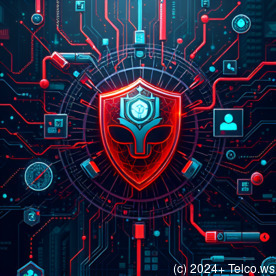
Go Microservices Architecture Design




Understanding Microservices Architecture
Microservices architecture is a modern approach to organizing software applications based on small, independent services. Each microservice represents a specific business function, allowing organizations to modularize their applications in a way that enhances flexibility and scalability. Unlike traditional monolithic architectures where components are tightly coupled, microservices are designed to be loosely coupled, enabling their independent development and deployment. This independence caters to individual business needs, addressing specific functionalities without requiring a comprehensive overhaul of the entire system.
The fundamental essence of microservices revolves around agility. In a world where digital transformation is crucial, organizations must deploy updates faster, react to market disruptions, and cater dynamically to customer feedback. By leveraging the microservices architecture, businesses can achieve rapid iterations, allowing them to introspectively improve products and services based on real-time feedback. This methodology translates technical efficiency into business agility, unlocking new opportunities for innovation.
Additionally, microservices can be developed using diverse programming languages and technologies, giving developers the freedom to choose the best tools for their tasks. This polyglot nature fosters creativity and allows teams to innovate within their domain expertise, leading to better product quality and overall customer satisfaction.




The Economic Perspective
Analyzing the economic implications of adopting microservices architecture reveals substantial financial benefits. Organizations that shift to a microservices-based design using Go can effectively reduce overhead costs linked to system downtime and maintainable technical debt that often plague monolithic systems. Instead of waiting for a monolithic application to grow bloated and cumbersome, microservices promote a proactive approach to stability, enabling teams to work independently without disrupting the entire operation.
Through independent development cycles, teams can continuously deliver value without hindrances. This model often leads to increased productivity, as developers focus on a single service without grappling with the intricacies of the entire application. Moreover, as separate teams strive to align their services with the overarching business goals, organizations can respond rapidly to lucrative market demands, thus facilitating customer retention and enhancing competitive advantage.
This economic efficiency also aligns with the principle of optimal resource allocation. Companies can make informed decisions on expenditures related to technology investments, infrastructure, and human resources, ultimately leading to maximized returns. With the capability to identify and isolate performance issues, organizations can reallocate resources toward high-value projects more effectively, which proves advantageous in the ever-evolving landscape of software development.




Political and Legal Considerations
When exploring the political and legal ramifications of adopting microservices, it is essential to consider the interplay between rapid innovation and compliance with governing laws and regulations. Data protection laws, such as the General Data Protection Regulation (GDPR) in Europe, impose strict standards on how organizations handle consumer information. Consequently, the ability to design microservices that respect user privacy and adhere to legal mandates becomes paramount when building applications.
The nature of microservices allows organizations to establish clear boundaries between services that handle sensitive data and those that do not, thereby minimizing security risks. This separation simplifies the implementation of consent mechanisms and encryption protocols, helping protect user data throughout various operational stages. Compliance becomes a byproduct of architecture rather than an afterthought, leading to more robust governance models.
Furthermore, legal considerations related to intellectual property (IP) also arise with microservices. Companies must ensure they have proper licensing for any third-party services or libraries integrated within their microservices framework. Moreover, maintaining detailed documentation for individual services not only enhances operational oversight but also protects organizations from potential legal disputes related to IP infringement or service misuse.




Social Impact
The societal implications of adopting microservices architecture are significant, particularly in how it enhances collaboration and innovation in the software development process. As organizations increasingly adopt remote work arrangements, the decentralized nature of microservices allows teams across disparate locations to collaborate effectively. Each developer can focus on their designated service, leveraging their unique expertise, without the burden of understanding the entire codebase.
This structural flexibility empowers organizations to embrace a culture of inclusivity and diversity. Microservices architecture can facilitate a more equitable workplace by enabling cross-functional teams from different backgrounds to contribute meaningfully. The inclusion of diverse perspectives can lead to superior decision-making and innovative solutions that are more reflective of global user needs, ultimately enriching the user experience.
Moreover, the modular approach of microservices helps organizations pivot easily in response to social trends and user feedback. Businesses can adapt applications to reflect changing consumer behaviors or advocate for social justice issues effectively, ensuring that technology remains relevant and ethically aligned with societal values.




Environmental and Ethical Considerations
As organizations increasingly prioritize sustainability, microservices architecture presents opportunities to create more resource-efficient applications. By allowing individual services to scale up or down based on demand, organizations can optimize their resource allocation, resulting in reduced energy consumption. This flexibility aligns with sustainable development practices by minimizing unnecessary resource use, which is crucial in the fight against climate change.
Ethical considerations are integral to the implementation of microservices. Companies must stay accountable for how they handle user data, ensuring transparency and user consent at every stage. Implementing strong security measures and maintaining open communication with users about data usage is vital for fostering trust. By embedding ethical practices within their microservices architecture, organizations can mitigate risks associated with data breaches and misuse.
Furthermore, by embracing eco-friendly programming practices when developing services, organizations can contribute to environmental conservation. Initiatives like optimizing algorithms to reduce processing power or utilizing cloud solutions that promote energy efficiency can lead to methodologies that align technological advancement with principles of environmental stewardship.




The Historical Development of Microservices
The evolution of the microservices architecture can be traced back to the early 2000s when large e-commerce platforms began to seek solutions to handle their scaling challenges. Companies such as Amazon and Netflix were pioneers in this domain, opting for microservices to manage growing infrastructures effectively. They demonstrated that by breaking down applications into smaller services, they could enhance scalability, agility, and resilience.
Over the years, these early adopters have shared invaluable insights and documented their practices, contributing to a growing body of knowledge that informs current microservices strategies. Key challenges and solutions have been compiled into frameworks that guide organizations embarking on their microservices journey today. The emergence of containerization technologies, like Docker and orchestration tools such as Kubernetes, has further simplified the deployment and management of microservices, making it easier for businesses to embrace this architecture.
As organizations continue to adopt microservices, languages like Go have risen to prominence due to their inherent capabilities that align with microservices principles. Go was designed for performance and efficiency, enabling developers to build high-quality services in a streamlined manner. This historical backdrop underscores the importance of microservices in shaping modern software development and emphasizes how far organizations have come in learning to build scalable and maintainable applications.




Technical Specifications and Benefits of Using Go
Performance and Concurrency
Performance remains a paramount factor for any microservices architecture. Gos robust concurrency model, driven by lightweight goroutines, is a standout feature that enables developers to handle thousands of concurrent processes efficiently. This design allows Go applications to make optimal use of multicore processors, which is especially beneficial for resource-intensive microservices that require high transaction volumes or real-time processing.
Furthermore, Gos garbage collector is highly optimized for low latency, providing a consistent throughput for microservices under assorted loads. By reducing the time spent on memory management, Go ensures that microservices can respond more swiftly and reliably, contributing to overall enhanced user experiences.
Ease of Deployment
One of the defining strengths of Go is its ability to compile code into a single binary executable. This feature streamlines the deployment process significantly by eliminating dependency management challenges that often burden developers and operations teams. With just one file, Go applications may be deployed seamlessly in various environments, making it an ideal choice for complex microservices architectures.
The advent of containerization technologies has further accentuated Gos deployment strengths. By deploying Go microservices within Docker containers, organizations can encapsulate all dependencies, ensuring consistency across development and production environments. Moreover, the use of containers simplifies scaling and management tasks, allowing microservices to spin up or down quickly in response to user demand, enhancing system resilience.
Robust Standard Library
Go comes equipped with a comprehensive standard library that facilitates the seamless creation of networking and web applications. The built-in HTTP server and concurrency primitives empower developers to create high-performance microservices without needing to grapple with the complexities of low-level networking protocols. By abstracting these lower-level details, developers can allocate their time and resources toward building business logic to unlock more value for users.
Additionally, Go features a strong focus on testing and debugging, with built-in support for unit testing and profiling. This emphasis on quality assurance enables teams to deliver reliable services, thereby maintaining a high standard of performance and user satisfaction throughout the software lifecycle.




Conclusion
In conclusion, the adoption of microservices architecture powered by Go programming language unlocks transformative advantages for organizations poised for growth in the digital era. By recognizing the economic, political, and social implications of microservices, alongside the technical capabilities of Go, businesses are better prepared to navigate today's challenging software landscape. With Go, organizations are primed to achieve heightened levels of agility, scalability, and efficiency, fostering an environment conducive to innovation.
Moreover, this architectural approach not only enhances application performance but also empowers teams to engage with the socio-environmental considerations of their developments. As companies embark on their microservices journey, it becomes increasingly vital to integrate business goals with ethical practices, thus ensuring that technological advancement aligns with broader societal values.
Transform Your Business with Go Microservices
Interested in knowing more? Feel free to contact us at www.telco.ws using email, phone, or our online form for inquiries and consultations. If you are ready to enhance your operations, our Go Microservices Architecture Consulting Service is priced at $1,200 . Please proceed to our Checkout Gateway to complete your payment of $1,200 in favor of our Company, following the provided instructions. Once your payment is processed, please reach out to us through email, phone, or our site, providing your payment receipt and details to arrange the Microservices Architecture Service tailored to your needs. We appreciate your interest and are excited to assist you in transforming your business.
